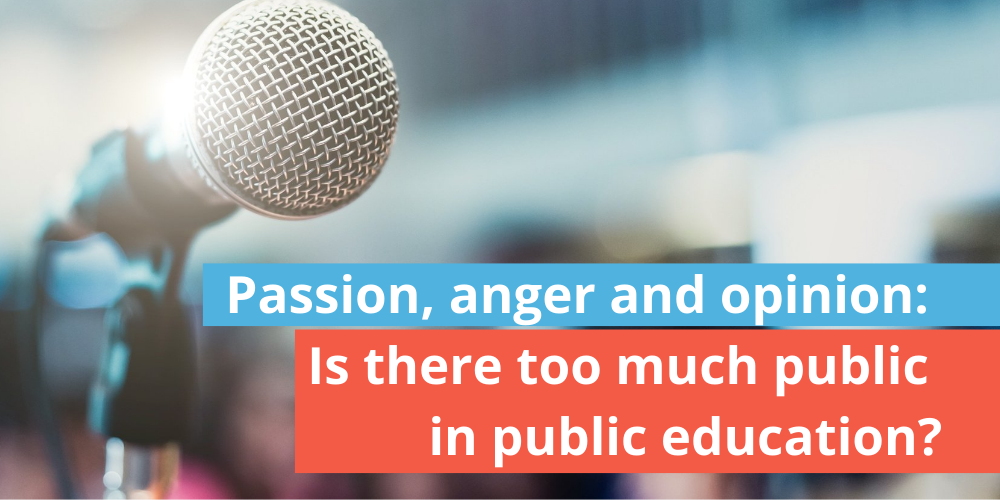When I ask the question it makes school leaders pause. And I mean really pause. Why? Because they are squarely in the middle of the culture wars (on top of a pandemic) and, well, it is exhausting. So exhausting that it is nearly impossible at times to accomplish or find joy in the work.
Board meetings which were otherwise quiet and lightly attended are frequently hugely attended. That is good — except when it is disruptive. One midwest school district recently had to adjourn because a member of the public was not wearing the required mask. Another east coast superintendent now has protection detail and has relocated his family. So, yes, temperatures are running hot out there.
And yet things have been trending this way for a while. Is there actually a point at which there is too much public in public education?
Actually, no. But not for the reason you might think.
The truth is, that public schools answer to their entire public. It is impossible to extricate the public from public school. School systems answer to and must reflect their community. And why would you want to? Public input makes public schools better.
Instead, the real question you need to answer is: How are you facilitating public input while controlling your schedule?
Here are some quick questions you should ask yourself:
Do your board meetings show good governance?
I seriously love that term: Good governance. A board meeting that goes to midnight is not good governance. No, that my friend, is a runaway train of lousy, inefficient governance that makes it difficult for the public to attend and participate. Truly, who wants to stay until midnight or beyond? No one. That’s who. Board meetings should be efficient and respectful so that all can see the business of the board.
Are you really hearing the public or are you only hearing the cacophony of anger?
Most school systems have clear policies on how the public can participate during a meeting of the board. Typically it is a total of 30 minutes with 5 minutes per person permitted. Stick with the policy. Policies are in place for many reasons but one of them is fairness. This takes discipline from the board, too, so make sure they are fully aware of what might happen ahead of time.
- Caveat: If you have a room full of people, you should consider allowing all to speak — just as a one-time departure (reserved for very contentious issues) from your policy. This should be the exception and not the norm because remember what I noted above about good governance? People want and deserve to be heard. Establish ground rules like three minutes per person and we will stay until every one who wants a chance gets it.
- Allow other avenues by which people can submit comments. Consider establishing a special comment-type email account for this purpose. You can use something like emailthesuperintendent@ or comment@. Just make sure you include an auto response. Organizing and channeling input in this way also helps keep things manageable and focused for you, too. It is also a better method for when you really want to figure out the true issues.
Is the public hearing from you, as the school leader?
Communicate honestly with the public about what your school system is facing. Superintendent Trent Bowers, from a Columbus, Ohio suburb recently wrote a blog to his community that went viral and made national news. It might be time to do something similar.
Are you controlling your schedule and daily health?
There are more demands and constant interruptions than ever on school leaders. Carve out a set time to read and respond to emails each day. This way, they will not dominate your day and when you are reading them, you can really provide the due attention the emails deserve. Here’s what Dr. Paul Imhoff, president of the American Association for School Administrators (AASA) does.
In working directly with the CEO of a school system, a large part of our work at Allerton Hill is to make sure the public is being heard and respected. In doing so, it respects your time while allowing for better focus on the issues, not the noise. I’d like to hear from you on this article. Tell me what you think about these solutions and others you may use. Reach me at info@allertonhillcomm.com.


